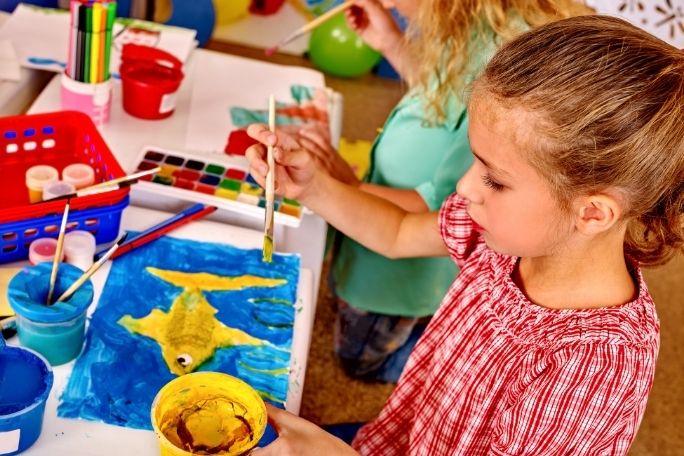Lesson summary
Children investigate water, including why we need it and how we can use it. Younger children play with water, exploring different states of water such as ice or spray, and add natural and colourful materials to water to see how they interact with water. Older children read a story about water and think about why we need water and where we can find it. They use water as the basis for creating an artwork on the theme of water.
Activity Intention:
- This activity is designed to help connect children to the wonders of the natural world through sensory and play-based learning.
Lesson guides and printables
Lesson details
Curriculum mapping
Learning Outcome 2: Children are connected with and contribute to their world
2.4 Children become socially responsible and show respect for the environment
Learning Outcome 4: Children are confident and involved learners
4.1 Children develop dispositions for learning such as curiosity, cooperation, confidence, creativity, commitment, enthusiasm, persistence, imagination and reflexivity
4.4 Children resource their own learning through connecting with people, place, technologies and natural and processed materials
Learning Outcome 5: Children are effective communicators
5.1 Children interact verbally and non-verbally with others for a range of purposes
5.3 Children express ideas and make meaning using a range of media
Resources required
Ages 0 – 2:
- A range of different containers that can hold water; place colourful materials around these containers, including coloured balls, different coloured strips of fabric, flowers and petals, leaves etc.
- Optional: ice cubes, spray bottles, cups and spoons nearby for children to use.
- Optional: watercolour paints, such as the Connector Paint Box, or watercolour pencils.
- Optional: towels and dry clothes.
Ages 3 – 5:
- The Waterhole by Graham Base
- Art materials such as watercolour paints from the Connector Paint Box or watercolour pencils. Plus materials such as spray bottles, brushes, paper.
Additional info
Faber-Castell has long understood the importance of creativity to all people, especially to young people. It is also continuously searching for environmentally friendly processes and high-quality materials to enhance children’s creative experiences throughout every development phase. For more information about Faber-Castell, click here.


Welcome back!
Don't have an account yet?
Log in with:
Create your free Cool.org account.
Many of our resources are free, with an option to upgrade to Cool+ for premium content.
Already have an account?
Sign up with:
By signing up you accept Cool.org's Terms and Conditions(Opens in new tab) and Privacy Policy(Opens in new tab).